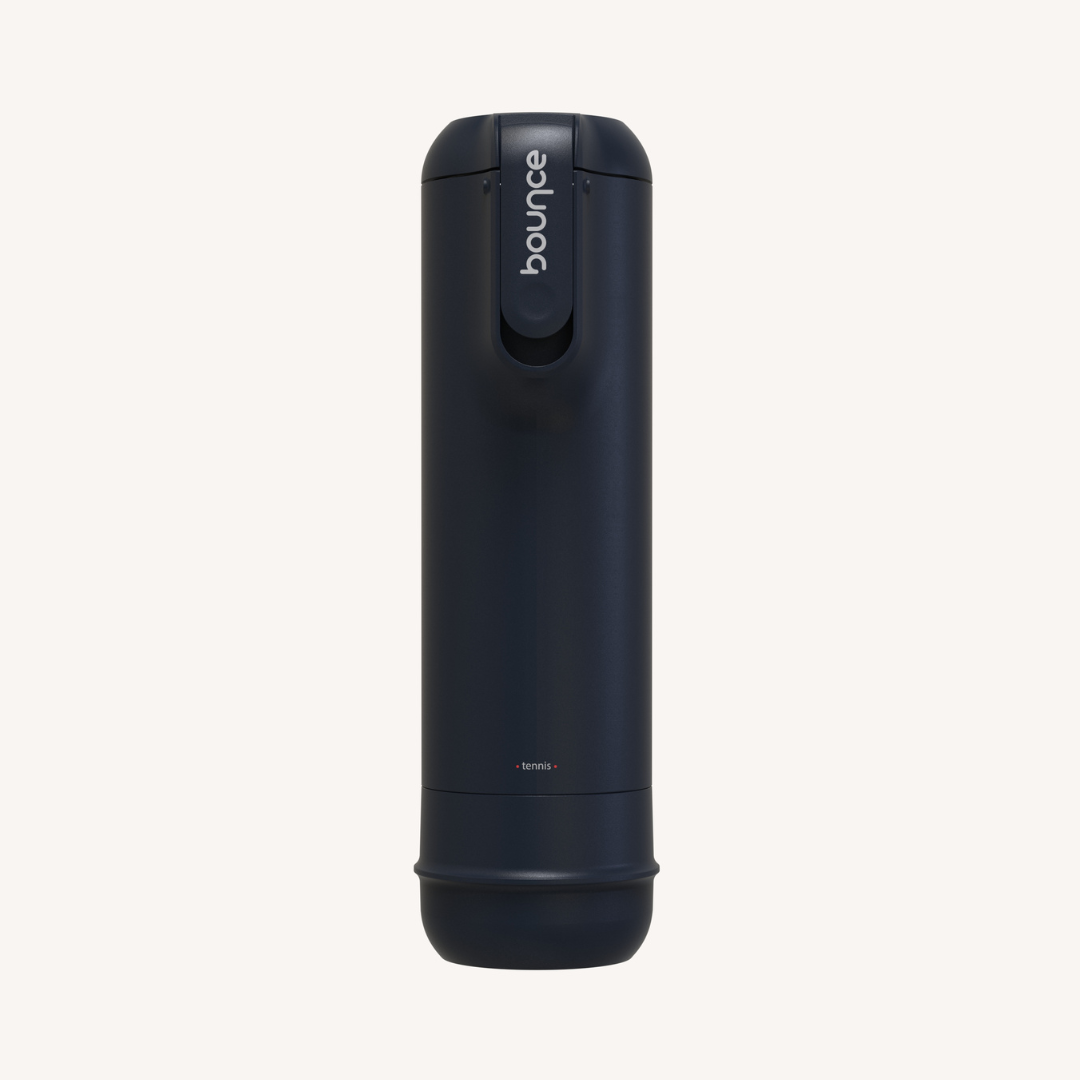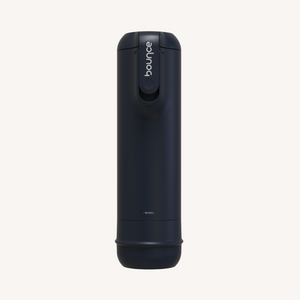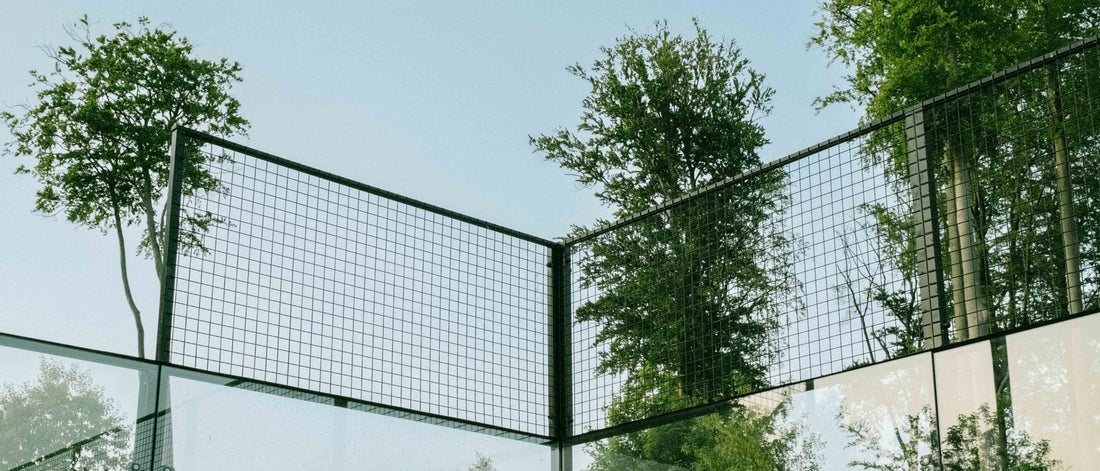Tennis and padel balls are beloved by players worldwide, but have you ever stopped to consider their environmental impact? These small, seemingly innocuous items can contribute to significant waste and pollution. That’s why at Bounce we are taking action to address this problem through innovative recycling initiatives.
Key Takeaways
- Tennis and padel balls have a significant environmental impact.
- Recycling these materials is necessary to mitigate their impact.
- Bounce is a company dedicated to sustainability and recycling.
- The recycling process involves collecting, separating, and repurposing such materials.
- Consumer participation is essential for increasing awareness and driving change.
The Environmental Impact of Tennis and Padel Balls
Tennis and padel balls may seem harmless, but improperly disposing them can have a significant environmental impact. These balls are made of rubber and felt, which are not bio-degradable materials.
Approximately more than 350 million balls are produced each year worldwide and more than 95% of tennis and padel balls end up in either landfills or are incinerated. When tennis and padel balls are discarded in landfills, they take up valuable space and do not break down. This waste can result in soil and water pollution, which can harm plant and animal life. Furthermore, as you can imagine, the production of new tennis and padel balls requires the consumption of natural resources, such as oil and gas.
The manufacturing process of tennis and padel balls also contributes to environmental issues. The production of rubber and felt involves the use of chemicals such as adhesives and solvents and energy, which results in greenhouse gas emissions and air pollution.
“Tennis balls can take up to 2500 years to break down in a landfill, and the production of new balls requires non-renewable resources”
Computing the real CO2 emissions of one ball is not easy but recycling 1000 tennis balls saves approximately 110 kilograms of CO2 emissions.
Additionally, the vast majority of ball manufacturing factories are primarily located in Asia. Balls therefore travel thousands of kilometers (from the factory to the distributor, then to the store to end up in your bag) so that they can be played for a couple of games.
The Need for Recycling Tennis and Padel Balls
Recycling tennis and padel balls through programs like Bounce Circular not only keeps them out of landfills but also conserves resources. The materials can be reused or repurposed, reducing the need for new resources to be harvested and helping to create a more circular system.
It is crucial to find alternative solutions for tennis and padel ball disposal and support recycling efforts to mitigate their environmental impact.

Bounce's Commitment to Sustainability & Impact on the Environment
As a company dedicated to sustainability, at Bounce we understand the significant impact tennis and padel balls have on the environment. That's why we take a holistic approach, considering every aspect of the lifetime of the tennis and padel balls.
"We believe in making a positive impact, not just in tennis and padel communities but for the environment and future generations"
One of the ways Bounce addresses the environmental impact of tennis and padel balls is by using the Bounce tube which multiplies the lifetime of tennis and padel balls in order to reuse the balls longer instead of throwing them away after a few games. The product has been designed with an integrated pump to put pressure in the tube (recreate a pressurized environment) to utlimately increase the lifespan of balls.
"The least polluting ball is the one that is not replaced" says Bounce CSO, Antoine Wouters.
Bounce also offers a Circular program in clubs to collect the used tennis and padel balls, giving them a second life through recycling or repurposing. This program ensures that the materials are properly disposed of and kept in circulation, reducing waste and contributing to a circular economy. We collaborate with recycling facilities and eco-conscious partners such as the Belgian (French) Tennis and Padel Federation to promote sustainability. Bounce has been partnering with tennis and padel clubs, coaches, sport stores and individuals to collect balls, ensuring they do not end up in landfills. Bounce has already collected thousands of balls through its Circular program and continues to push until all clubs and players have a solution to recycle their balls.
"By recycling tennis and padel balls, we can reduce waste, conserve resources, and make a meaningful contribution to a more sustainable future", says Bounce CTO, Maxime Sohet.
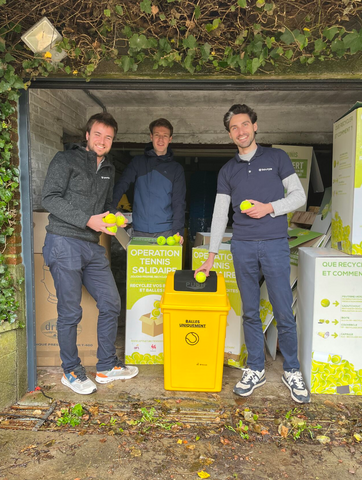
Our beginnings in our garage

Our definition of a well-equipped tennis court
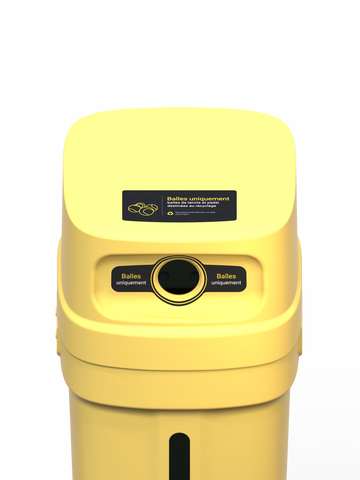
The Process of Recycling Tennis and Padel Balls
Recycling tennis and padel balls is not a simple process, but with innovative solutions like those offered by Bounce, it is becoming more accessible. Here's a breakdown of the steps involved:
- Collection: Tennis and padel balls are collected from various sources, including sports clubs, tournaments, and individuals. Bounce provides collection bins that can be distributed to these locations for easy drop-off.
- Sorting: The collected balls are sorted based on their condition. Balls that are still playable are putting in the Bounce Pro pressurizer are set aside for second-hand sale or donation while worn-out balls are ready for recycling.
- Processing: Broken and unusable balls are sent through a shredder that chops them into small pieces. These pieces are then sorted into different materials such as rubber and felt. Separating felt and rubber is not an easy topic and and requires specific skills.
- Reusing or Repurposing: The separated materials are then used to create new products.
The Advantages of Recycling Tennis and Padel Balls
Recycling tennis and padel balls has numerous advantages that go beyond environmental benefits. Here are some reasons why:
- Reduces waste: Tennis and padel balls are not biodegradable, meaning they take a long time to decompose and contribute to landfill waste. Recycling them diverts them from the waste stream and gives them a new purpose.
- Conserves resources: Repurposing materials from old balls reduces the need for virgin resources in manufacturing new ones. This helps preserving natural resources and reduce energy consumption and associated carbon emissions.
- Closes the loop: Recycling creates a circular system where materials remain in use for as long as possible, reducing the need for extraction and processing of new resources. It is an essential part of the circular economy that supports a sustainable future.
- Cost-effective: Recycling is often more cost-effective than producing new materials from scratch. This is because the costs of extraction, processing, and transportation of virgin materials are eliminated.
By recycling tennis and padel balls, we can achieve a more sustainable future while also reaping economic benefits.
The Challenges of Tennis and Padel Ball Recycling
While recycling tennis and padel balls is crucial for protecting the environment, it also presents many challenges. One significant difficulty is the separation of materials. Tennis and padel balls are often made from various materials, including rubber and felt. These materials need to be separated before they can be recycled, which can be a labor-intensive and cost-effective process.
Finally, there is a need for increased infrastructure and awareness of recycling programs. While Bounce and other organizations are making efforts to recycle tennis and padel balls, there is still a lot of work to be done to ensure that these programs are widely accessible and effective.
The Importance of Consumer Participation
As we have seen, recycling tennis and padel balls is crucial for mitigating their environmental impact. However, this process cannot be successful without the participation of tennis and padel players. By taking small steps towards sustainability, such as properly disposing of used balls, we can create a significant impact.
One way to encourage consumer participation is through education and awareness campaigns. By raising awareness of the benefits of recycling and the harmful effects of improper disposal, consumers can make informed choices. Additionally, manufacturers and retailers can play a role by providing information on proper disposal methods and promoting recycling programs.
Finally, it is important for consumers to hold manufacturers and retailers accountable for their sustainability efforts. By advocating for sustainable products and packaging and pushing these companies to adopt more environmentally friendly practices, we can drive positive change. Bounce has this ambition to disturb the big players in order to push and encourage them in this approach.
Future Innovations and Collaborations
In the quest for a greener planet, there is a need for innovation and collaboration between manufacturers, consumers, and recycling facilities. Bounce is leading the way in this regard, with our commitment to sustainability and our efforts to create a circular system for tennis and padel balls.
Looking forward, there is significant potential for further innovation in the recycling process. New technologies could be developed to improve the separation of materials, as well as ways to repurpose the collected materials more efficiently.
Collaborations between different stakeholders could also help to drive positive change in the industry. Manufacturers could work more closely with recycling facilities to ensure the materials they use are easy to recycle. Consumers could play a role in this as well, by choosing products that are environmentally friendly and encouraging others to do the same.
By working together and embracing new ideas, we can create a more sustainable future for tennis and padel balls. Bounce's commitment to sustainability is just the beginning, and it is up to all of us to join in and support this journey towards a greener planet.
Conclusion
In conclusion, it is clear that the recycling of tennis and padel balls is crucial to reducing the environmental impact. From the waste generated to the harmful effects on the planet, it is essential that we take action to address this issue.
Bounce is committed to this sustainable development, with initiatives and actions taken to curb the environmental impact of tennis and padel balls. The process of recycling, from collection to reusing or repurposing the materials, is innovative and can contribute to a more sustainable future.
However, there are also challenges to overcome, such as the collection process and the need for increased awareness and infrastructure. This is where consumers and clubs participation becomes vital, as individuals can make a difference by supporting recycling programs and making sustainable choices.
